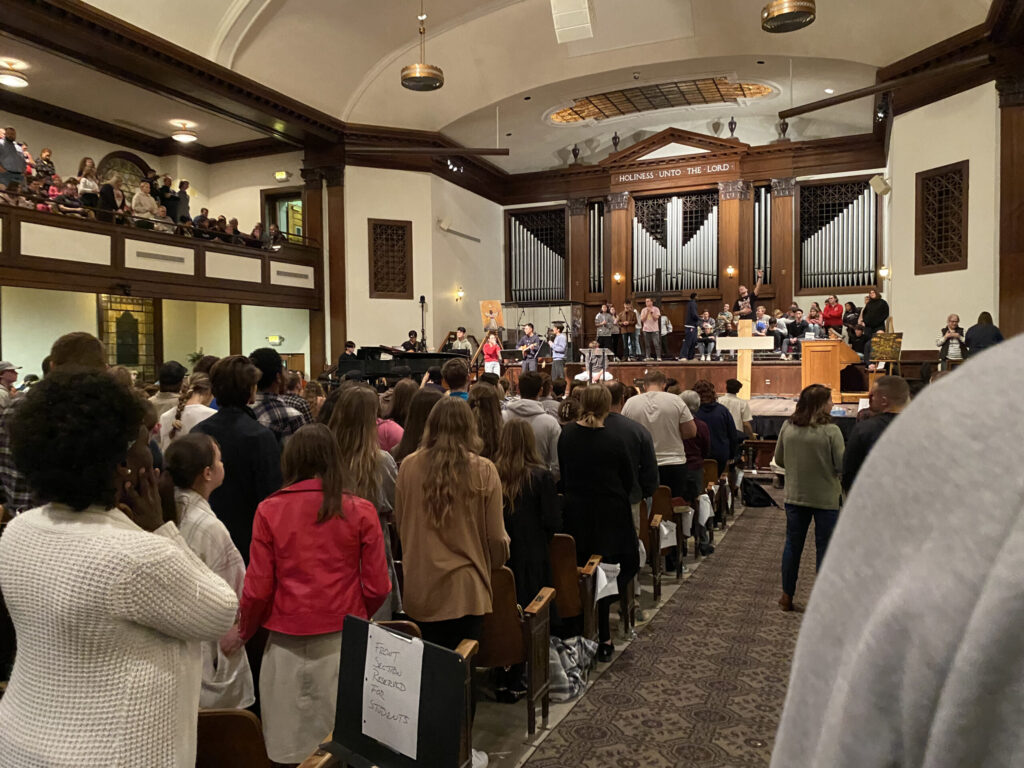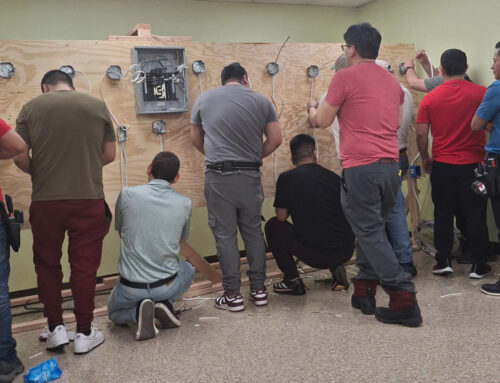
Revival: The work of the Spirit intensified
By Peter Farthing
Just like lightning in the sky, revivals appear in this world from time to time. They might burn for only a few months; they might go on for years. They might capture a single church or a whole swathe of churches; they might launch a movement. They come in different forms but bottom line, they bring life.
‘When you read the history of the past,’ said Martyn Lloyd-Jones in his lectures on revival, ‘you find that there have been periods in the history of the Church when she was full of life, and vigour, and power.’
Numbers of people were converted regularly, day by day, week by week. Christian people delighted in prayer. You did not have to whip them into prayer meetings, you could not keep them away . . . they would stay all night praying . . . And men and women were able to tell of rich experiences of the grace of God that thrilled them, and moved them, and made them feel that it was more precious than the whole world.
What has been happening at Asbury University, Kentucky, since the morning chapel service of February 8th seems very much like the revivals Lloyd-Jones described.
Presence of God
As I said, revivals do not all look the same. They do however have one thing in common. As Timothy Keller put it, revivals are, ‘always seasons in which the ordinary operations of the Holy Spirit are greatly intensified.’
And there is another common experience—the presence of God is tangibly real.
People will say, ‘But God is always present. The Holy Spirit is continually with the church; there is no need to expect any more.’ But the scriptures reveal that God can come powerfully present, God’s people may experience his presence. They can encounter his holy power. They can feel him moving, see him convicting, sense his nearness and power. That happens powerfully during revivals. And it fires the people of God like nothing else can.
‘Suddenly,’ wrote Martyn Lloyd-Jones, ‘those present in the meeting become aware that someone has come amongst them, they are aware of a glory, they are aware of a presence . . . They really feel that they are in heaven—they have forgotten time . . . God has come down amongst them and has filled the place and the people with a sense of his glorious presence.’
The Salvation Army’s Bramwell Booth was only in his early 20s when he led all-nights of prayer and holiness meetings in which the Holy Spirit moved just like that. He said there were moments in those meetings when people were overcome, ‘by a sense of overwhelming spiritual reality.’ That is a powerful experience for anybody—a sense of overwhelming spiritual reality.
In the second week of the Asbury continual meeting, New York-based Salvationists Steve and Sharon Bussey drove down to Wilmore Kentucky to experience what God was doing. Steve reported: ‘Last night and today we are hearing testimony after testimony of discovering that Jesus is REAL! That God REALLY loves us.’ That is another way of describing the real and felt presence of God. It is, as Methodist historian Howard Snyder said, ‘the essential dynamic in movements of spiritual renewal.’
God’s purpose
What then is God up to in such times? Well, revivals bring two marvellous phenomena.
First, God’s people come alive. Brian Edwards said that during a revival, Christians are ‘saturated with God.’ Michael McClymond reports:
Participants in revivals speak of their vivid sense of spiritual things, great joy and faith, deep sorrow over sin, passionate desire to evangelise others, and heightened feelings of love for God and their fellow humanity.
As a result of this, and also of the Spirit of God’s direct work, you get the second phenomena. God’s kingdom rapidly expands. ‘God’s work accelerates,’ wrote JI Packer. ‘Truth spreads, and people are born again and grow in Christ, with amazing rapidity.’
Why needed
Why are revivals needed? For the same reason we need to wake up each morning, because we have been asleep. The church has a tendency to fall asleep, sedated by what Paul called the flesh, lulled by the world. The story of the church is not one of continual progress and life—things decline, life fades. And so, But from time to time, churches need God’s reviving touch.
Another way to look at it is to say God renews his church. Over time, churches become old-fashioned, they grow tired, they drift into deadening theology, lose spiritual life, accommodate to the world. In that state, the church needs to be renewed.
There is another reason God needs to revive and renew. God wants his church to reach the world for Christ, but the world keeps changing. As Helmut Thielicke put it, ‘The gospel must constantly be forwarded to a new address, because the recipient is repeatedly changing his place of address.’ New measures are required. And so, God renews—enlivens and modernises his church.
Ways to go deep
Now just as lightning looks for places to touch earth, the Spirit will seek opportunities to touch lives. To go deep. To inject life and bring repentance and holiness. In the early Salvation Army, for example, he used lengthy prayer meetings and holiness meetings, with the mercy seat open. We might think of the 24/7 Prayer Movement as another way God used to work deeply in many.
At Asbury, singing, biblical teaching, silence, times of confession seem to be the menu. Steve Bussey reported: ‘Words being used to describe this revival include the following: gentle, patient, clean, innocent, kind, simple, real, and expectant . . . No superstars. No sizzle. Meeting the Father is the focus.’
Church historian Richard Lovelace said God looks for something else so he can touch lives. He said revivals only happen when there is ‘the proclamation of the Gospel in depth.’ That is, when the cross of Christ is proclaimed, and with it a call for radical repentance and a promise of regeneration by the Spirit and of sanctification. That seems to be happening at Asbury as well.
Across communities
So far, I have focused especially on the meetings where the Spirit moves in power. That is certainly one thing people are reporting out of Asbury. But there are other ways of looking at revival.
There are revivals for example which last for years and extend across many communities.
I have mentioned Bramwell Booth because Dr Roger Green and I are writing Bramwell’s biography. At the age of 22, an overworked and exhausted Bramwell got away to the town of Värnamo, Sweden, for a rest. The trouble was, God was sending revivals all over Sweden, and he sent one to Värnamo, and Bramwell led it. Once more the presence of God has palpably real and lots of unlikely people got saved.
Something similar seems to have been happening in Iran in recent years. In that most unlikely of nations, people have quietly become Christians. ‘Right now you can see the results of the Holy Spirit,’ Raizal, a believer in Iran, said. ‘From 1994, there were about 100,000 believers. Right now, there are over 3 million. You can see what the Holy Spirit is doing with the people.’
That is a second way God works.
Renewal movements
But there is a third, crucial way to understand how God works to revive his church. Not only does he come in meetings, he also creates movements.
What will happen to those students at Asbury who have met the living Christ? Chances are, they will go and tell others about it. You can already find testimonies online as well, really powerful words. Chances are, the young people will connect with others who have been switched on. They will meet together for prayer. Maybe groups will go and clean the home of some elderly person. Maybe they will visit the homeless. Maybe they will start new congregations to reach non-Christians of their generation. Maybe they will connect with other alive young Christians across the country, across the world.
Rapidly, one person will ‘infect’ another, and a network will grow, and you will get a movement. Revivals, it has been said, are Holy Spirit-infused people movements.
I remember some years ago when the UK’s Phil Wall and others were raising up young people around the Salvation Army world, General Paul Rader called that a renewal movement. That’s a technical term for what God creates—a renewal movement.
Renewal movements often make high demands on their members for holiness and mission. But, as Charles Mellis showed, those demands actually add to the network’s appeal, especially among young people.
John Wesley’s Methodism began as a renewal movement. The Salvation Army began its rapid expansion in 1878 as a renewal movement. The Alpha Course and the 100 church plants out of London’s Holy Trinity Brompton is another. I met an Indian man who trains church planters to go into rural villages, and he sends out a new planter just about every week. There are many renewal movements.
Hopefully, this 2023 revival at Asbury University will become another.




